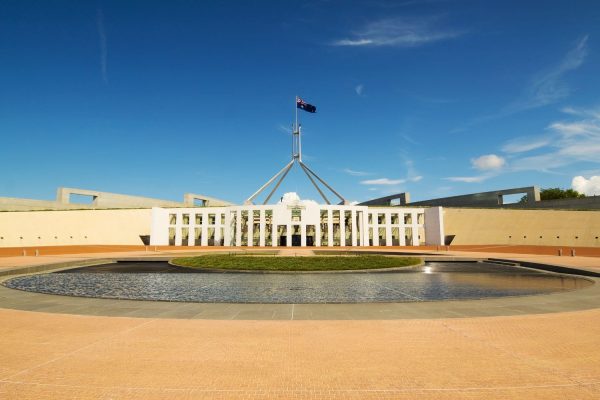KEY LEADERSHIP INSIGHTS
-
Victoria Prepares For State Election
Victorians are preparing to cast their ballots for the State Election in what has been another turbulent year in politics. With Victoria’s COVID-19 state of emergency at an end, a host of new issues from integrity to infrastructure dominate the public imagination, all of which have a bearing on the public interest and necessitate government leadership for the greater good.
-
Highlighted In This Report
The Australian Leadership Index (ALI) captures public perceptions of Australian institutions over time across three dimensions of leadership for the greater good: Integrity, Contribution, and Competence. In the following pages, we will showcase the ALI's findings on public perceptions of the Victorian government's performance on these dimensions in the months preceding the election.
-
Highs and Lows
Results reveal that the Andrews government has fallen below the state benchmark on all dimensions measured by the ALI, with the worst performance perceptions on transparency and accountability (Integrity) and the best (though still below the benchmark) on cultural inclusion (Contribution) and providing accessibility (Competence).

Sample details: These results are based a sample collected from October 2021 to September 2022, n = 170 (i.e., the number of observations from Victorians who rated the Andrews
government) and n = 4,165 (i.e., the number of observations from Victorians who rated any institution across the government, public, private and not-for-profit sectors).
Note 1. The results presented in this report are a snapshot of a larger ongoing study of public perceptions of leadership in Australia. When looking at the results for Victorians rating the
Andrews state government, at a confidence level of 95%, a sample of n=170 yields a ‘margin of error’ of approximately 8%.
Note 2. ‘Leadership for the greater good’ refers to public perceptions of leadership for the good of the public, community, or society at large. ‘Integrity’ refers to perceptions of transparency,
accountability, trustworthiness, and several other factors. ‘Contribution’ refers to perceptions of contribution to financial outcomes, societal welfare, environment, and several other factors.
Competence’ refers to perceptions of purpose, skill, efficiency, and several other factors.
the victorian state government leadership rollercoaster: a snapshot of public perceptions from 2018-2021
-
The Rise and Fall Of Public Leadership
Public perceptions of Victorian government leadership for the greater good fluctuated markedly from December 2018 to December 2021, rising and falling in response to events such as the 2019/2020 bushfire crisis and COVID-19 pandemic.
-
Crisis Stewardship
Strong public support for the actions of the Victorian government in the early stages of the pandemics saw public perceptions of government leadership for the good rise and peak in mid-2020, declining thereafter.
-
Leadership Rollercoaster
Overall, Victorians have had decidedly mixed feelings about whether the Victorian government leads for the benefit of the many rather than the few.

How are ALI scores calculated? The ALI score is calculated in a similar way to the Net Promoter Score, a well-known and easily understood index ranging from -100 to +100. The ALI score for the Victorian government is calculated as the proportion of people who believe the Victorian government shows leadership for the greater good to a ‘fairly large extent’ or ‘extremely large
extent’ minus those who believe that the Victorian government shows leadership for the greater good ‘to some extent’ or ‘not at all’. Positive scores indicate that the government is perceived as serving the public interest, whereas negative scores indicate that the government is seen as self-serving.
Sample details: The sample size for the period December 2018-December 2021 is 3,313, collected at a rate of an average of 254 respondents per quarter
vic government strengths and weaknesses | oct 2021 - sept 2022
-
Top 5 Strengths Of The Government
According to the public, the strengths of the Andrews government lie in its Contributions to public value (e.g., encouraging cultural inclusion, improving environmental sustainability) and Competence (e.g., accessibility of services, having a clear sense of purpose). However, despite these highlights, the Victorian government still performs below the state benchmark for these metrics.
-
Top 5 Weaknesses Of The Government
In stark contrast with the perceived strengths of the Andrews government – namely, its contribution to public value and competence – the perceived weaknesses of the government are largely in the domain of public integrity. Specifically, from the vantage point of the general public, the key weaknesses of the Andrews government relate to its perceived lack of transparency, accountability and trustworthiness.

Sample details: These results are based a sample collected from October 2021 to September 2022, n = 170 (i.e., the number of observations from Victorians who rated the
Andrews government) and n = 4,165 (i.e., the number of observations from Victorians who rated any institution across the government, public, private and not-for-profit sectors).
Note. The results presented in this report are a snapshot of a larger ongoing study of public perceptions of leadership in Australia. When looking at the results for Victorians rating
the Andrews state government, at a confidence level of 95%, a sample of n=170 yields a ‘margin of error’ of approximately 8%
About the report
The Australian Leadership Index addresses three fundamental aspects of leadership for the greater good in Australia: public perceptions of its state in a variety of social institutions and sectors; public expectations about leadership for the greater good; and the factors that predict or ‘drive’ public perceptions of leadership for the greater good.
To understand public perceptions and expectations about leadership for the good, ALI surveys approximately 1,000 people across all Australian states and territories each quarter. Each participant is asked to rate the performance of 4 randomly assigned institutions (from a list of 25) on leadership and its key drivers, integrity, contribution, and competence.
This report draws on results from Victorians surveyed from 2018-2022, collecting data on each participant’s perceptions of Victorian State Government leadership across that time period for each of the ALI’s metrics.



